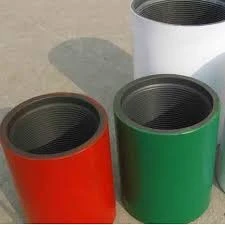- Afrikaans
- Albanian
- Amharic
- Arabic
- Armenian
- Azerbaijani
- Basque
- Belarusian
- Bengali
- Bosnian
- Bulgarian
- Catalan
- Cebuano
- Corsican
- Croatian
- Czech
- Danish
- Dutch
- English
- Esperanto
- Estonian
- Finnish
- French
- Frisian
- Galician
- Georgian
- German
- Greek
- Gujarati
- Haitian Creole
- hausa
- hawaiian
- Hebrew
- Hindi
- Miao
- Hungarian
- Icelandic
- igbo
- Indonesian
- irish
- Italian
- Japanese
- Javanese
- Kannada
- kazakh
- Khmer
- Rwandese
- Korean
- Kurdish
- Kyrgyz
- Lao
- Latin
- Latvian
- Lithuanian
- Luxembourgish
- Macedonian
- Malgashi
- Malay
- Malayalam
- Maltese
- Maori
- Marathi
- Mongolian
- Myanmar
- Nepali
- Norwegian
- Norwegian
- Occitan
- Pashto
- Persian
- Polish
- Portuguese
- Punjabi
- Romanian
- Russian
- Samoan
- Scottish Gaelic
- Serbian
- Sesotho
- Shona
- Sindhi
- Sinhala
- Slovak
- Slovenian
- Somali
- Spanish
- Sundanese
- Swahili
- Swedish
- Tagalog
- Tajik
- Tamil
- Tatar
- Telugu
- Thai
- Turkish
- Turkmen
- Ukrainian
- Urdu
- Uighur
- Uzbek
- Vietnamese
- Welsh
- Bantu
- Yiddish
- Yoruba
- Zulu
tubing collar
Understanding Tubing Collars Their Importance and Applications in Oil and Gas Industry
In the oil and gas industry, where precision and durability are critical, tubing collars play a vital role in ensuring the integrity and efficiency of operations. A tubing collar is a type of fitting used to connect two lengths of tubing seamlessly. These collars are an essential component in various applications, primarily in the drilling and completion of wells.
What are Tubing Collars?
Tubing collars are specialized connectors designed to join sections of tubing in both vertical and horizontal well applications. They come in various sizes and materials, typically made of steel or other alloys, to withstand the high pressures and corrosive environments encountered in the production of oil and gas. The design of a tubing collar allows for easy installation and ensures a secure seal, which is essential to prevent leaks and maintain the pressure within the tubing.
Functions and Applications
The primary function of tubing collars is to provide a strong, leak-proof connection between tubing sections. They are crucial for maintaining the flow of oil or gas from the wellbore to the surface facilities. Additionally, tubing collars can serve multiple roles throughout the lifecycle of a well
1. Well Completion After drilling, tubing collars are used during the completion phase to install production tubing that will carry hydrocarbons to the surface. Their durability and strength are paramount in ensuring the tubing can handle the pressure exerted by the fluids being transported.
2. Workover Operations In the case of workover or maintenance operations, tubing collars allow for the replacement or repair of sections of tubing without significant downtime. Their design facilitates easy connection and disconnection, making it simpler to perform necessary maintenance.
3. Preventing Leakages One of the most critical roles of tubing collars is to prevent leakage of fluids during production. A well-sealed collar can significantly reduce the risk of spills or blowouts, thereby enhancing safety and environmental protection.
tubing collar

Types of Tubing Collars
Different types of tubing collars are available, each designed for specific applications. Common types include
- Regular Collars These are standard collars used for connecting sections of tubing and are the most commonly seen in oil and gas operations.
- Specialty Collars These include variants designed for specific geological conditions or specialized functions, such as packer collars that allow for the isolation of certain sections of the well.
- Bumper Collars Used at the bottom of the tubing string, bumper collars help prevent tubing damage during installation and provide a cushioning effect.
Installation and Best Practices
The installation of tubing collars should be undertaken with care to ensure a proper seal. Proper torque specifications must be followed, and the use of appropriate cutting and sealing compounds can help enhance the integrity of the connection. Regular inspections and maintenance are also necessary to detect any signs of wear or corrosion, which can compromise the effectiveness of the collars over time.
Conclusion
In summary, tubing collars are a fundamental component of the oil and gas industry, contributing to the safety and efficiency of hydrocarbon extraction processes. Their ability to connect tubing sections securely while preventing leaks makes them indispensable in drilling operations. As the industry continues to evolve with new technologies and practices, the importance of high-quality tubing collars will remain critical to ensuring the successful production and management of oil and gas resources. Understanding their function and application can greatly enhance operational reliability and safety in this challenging environment.
-
Tubing Pup Joints: Essential Components for Oil and Gas OperationsNewsJul.10,2025
-
Pup Joints: Essential Components for Reliable Drilling OperationsNewsJul.10,2025
-
Pipe Couplings: Connecting Your World EfficientlyNewsJul.10,2025
-
Mastering Oilfield Operations with Quality Tubing and CasingNewsJul.10,2025
-
High-Quality Casing Couplings for Every NeedNewsJul.10,2025
-
Boost Your Drilling Efficiency with Premium Crossover Tools & Seating NipplesNewsJul.10,2025







